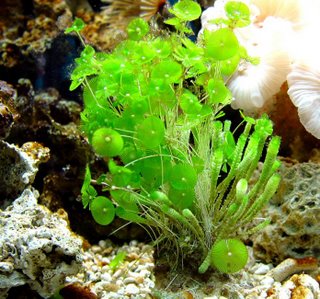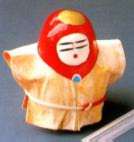::::::::::::::::::::::::::::::::::::::::::::::::::::::::::::::::::::::::::::::::::::::::::::::::::::
Laver seaweed (nori)
***** Location: Japan
***** Season: Early Spring
***** Category: Humanity
*****************************
Explanation
laver, sea lettuce, nori 海苔
..... Porphyra tenera
to dry laver, nori hosu 海苔干す
dried laver, hoshinori 干海苔
sweet laver, amanori 甘海苔(あまのり)
laver from Asakusa, Asakusa nori 浅草海苔(あさくさのり)
laver from Kasai, Kasai nori 葛西海苔(かさいのり)
laver sheets to eat, nori hibi 海苔篊(のりひび)
bamboo poles to grow seaweed among, nori soda 海苔粗朶(のりそだ)
floating seaweed, nagarenori 流海苔(ながれのり)
picking up seaweed, hiroi nori拾い海苔(ひろいのり)
board to dry seaweed 海苔砧(のりきぬた)、norisu 海苔簀(のりす)
susabi nori すさび海苔(すさびのり)
Nori from Uppuri Island, uppurui nori 十六島海苔(うっぷるいのり)
boat to harvest laver, noribune 海苔舟
gathering laver, harvesting laver, nori tori 海苔採
harvesting nori seeweeds, nori toru 海苔採る(のりとる)
... ... ...
"rock laver", iwa nori 岩海苔 いわのり
kigo for early spring
..... kaifu nori 海府海苔(かいふのり)
They are picked from the rocks and cliffs by hand when the tide receedes and are quite expensive.
"hair of the sea", ugo 海髪 うご
a kind of red seaweed, igisu
..... ogo おご、ogo nori 江籬(おごのり)、ugo nori うごのり、nagoya なごや
white seaweed (duckweed), shiramo 白藻 しらも
..... tsurushiramo 蔓白藻(つるしらも)、oo ogonori おおおごのり
green seaweed, aonori 青海苔
..... ito aosa いとあおさ、naga aonori 長青海苔(ながあおのり)、sasanori 笹海苔(ささのり)、usuba aonori 薄葉あおのり(うすばあおのり)、hito-e gusa ひとえぐさ
"cherry blossom seaweed" sakuranori 桜海苔 さくらのり
..... mukade nori むかで海苔(むかでのり)、okitsu nori 興津海苔(おきつのり)
"pine seaweed" matsu nori 松海苔 まつのり
..... pine needle seaweed, matsuba nori 松葉海苔(まつばのり)、tenboso てんぼそ
Saga nori 佐賀のり / 佐賀海苔 Saga Nori Laver. seaweed
from the Ariakekai Sea
:::::::::::::::::::::::::::::::::::::::::::::::::::::::::::::::::::::::::::::::::::::::::::::::::::::
regional humanity kigo for the New Year
yukinori, yuki nori 雪海苔 "snow-nori"
also called
hatsu nori 初海苔, or ichiban nori 一番海苔
This is a local kigo about the iwanori from Sado Island and along the coast of Echigo. They are given as an offering to the deity of the New Year on January first.
Even Ryokan has written a poem about this nori.
越の海 野積の裏の 海苔を得ば 懸けて偲ばぬ 月も日もなし
良寛 Ryokan
:::::::::::::::::::::::::::::::::::::::::::::::::::::::::::::::::::::::::::::::::::::::::::::::::::::
Nori (Japanese: 海苔) (Chinese: 海苔; pinyin: haitāi, Korean: kim or gim) is the Japanese name for various edible seaweed species of the red alga Porphyra including most notably P. yezoensis and P. tenera, sometimes called laver. The term nori is also commonly used to refer to the food products created from these "sea vegetables", similar to the Korean gim. Finished products are made by a shredding and rack-drying process that resembles papermaking. Japan, Korea, and China are the current major producers of nori.
 Nori is commonly used as a wrap for sushi and onigiri. It is also a common garnish or flavoring in noodle preparations and soups. Nori is most typically toasted prior to consumption ("yaki-nori" in Japanese). A very common and popular secondary product is toasted and flavored nori ("ajitsuke-nori" in Japanese), in which a flavoring mixture (variable, but typically soy sauce, spices and sugar in the Japanese style or sesame oil and salt in the Korean style) is applied in combination with the toasting process. Nori is also eaten by making it into a soy sauce flavored paste noritsukudani (海苔佃煮).
Nori is commonly used as a wrap for sushi and onigiri. It is also a common garnish or flavoring in noodle preparations and soups. Nori is most typically toasted prior to consumption ("yaki-nori" in Japanese). A very common and popular secondary product is toasted and flavored nori ("ajitsuke-nori" in Japanese), in which a flavoring mixture (variable, but typically soy sauce, spices and sugar in the Japanese style or sesame oil and salt in the Korean style) is applied in combination with the toasting process. Nori is also eaten by making it into a soy sauce flavored paste noritsukudani (海苔佃煮).A related product, prepared from the unrelated green algae Monostroma and Enteromorpha, is called aonori (青海苔 literally "blue nori") and is used like herbs on everyday meals like okonomiyaki and yakisoba.
Great source of Iron and Calcium.
© More in the WIKIPEDIA !
ao-nori
:::::::::::::::::::::::::::::::::::::::::::::::::::::::::::::::::::::::::::::::::::::::::::::::::::::
Asakusa nori 浅草海苔 Nori from Asakusa / Edo


江戸自慢三十六興 品川海苔
Utagawa Toyokuni 3rd 歌川豊国三代
A lady is sitting next to a dinner tray, grilling the Nori for a moment over charcoal on a Hibachi brazier to make them crisp and more tasty.
- quote -
Nori is an indispensable element of any sushi meal. At first glance, the black sheets of dried seaweed may look unappetizing, but nori is a healthy, nutritious sea vegetable. The type called Asakusa nori was once synonymous with nori, but is now fast disappearing.
The primary countries with nori-eating cultures in the world today are Japan, South Korea, and parts of China. In Japan, nori is a handy food item that is either used to wrap balls or rolls of rice or sliced into thin strips and sprinkled over various food items as a condiment. In the past, Westerners unfamiliar with nori were surprised to see Japanese people eating "black paper." But today, nori is widely recognized as a health food derived from the sea, and it can be found on the shelves of most natural food shops and supermarkets in the United States.
When Japanese people hear the word "nori," most conjure up images of Asakusa nori. But the type that is sold today is invariably the type called Susabi nori, as it is almost impossible to find Asakusa nori on the market today.
- - - - - Origins
Nori in Korean is called gim, which grows from spores on underwater rocks and branches of sea plants. According to Chosen shokubutsu-shi (The Flora of Korea) by Korean culinary expert Chun Daesong, nori first entered Japan in the late sixteenth century following a military expedition to Korea by warlord Toyotomi Hideyoshi. Nori was reportedly brought back to Japan, first to Hiroshima and eventually to Edo (present-day Tokyo), after which nori aquaculture began in Tokyo Bay.
Great progress was made in aquaculture techniques following World War II. Nori is harvested much like green tea, with only freshly grown "sprouts" being plucked. Sprouts are soft while young, but they harden as they grow. Harvest periods are very short and yields small if the process is left completely to nature.
Thus a method was developed to prolong the harvest period. Seedlings on nets are lowered into the sea until they grow to around 3 to 4 centimeters. They are then drawn up and preserved in a frozen state. When the nets are lowered into the sea again, the nori starts growing again. This method has more than doubled nori's harvest period.
- - - - - The Disappearance of Asakusa Nori
Nori usually refers to amanori (genus Porphyra), of which the Asakusa variety was once quite common. Most amanori freshly harvested off Japan's coast has a sweet aroma and a faintly sweet taste, giving rise to its name (amanori means "sweet nori"). Most amanori is found along the Pacific coast, in the Seto Inland Sea, and on the northwest shores of Kyushu in the upper intertidal. It is most commonly seen near river mouths, where water tends to have lower salinity.
Asakusa nori is extremely vulnerable to changes in temperature and to seawater contamination and is highly susceptible to disease. It may only be natural, then, that this type gradually disappeared as pollution grew more serious in Japan.
- - - - - Shigemi Koga, an Asakusa Nori Grower
Growing Asakusa nori without acid treatment requires the use of healthy seeds. Shigemi Koga (58) thus frequently visits a fisheries research center that cultivates a type of Asakusa nori called Noguchi in June to check the growth of seedlings. In September he prepares the breeding grounds by inserting metal poles that will hold the nets, and in mid-October, when seawater is around 22 to 23 degrees, he releases the spores. If seawater temperatures rise too high, the seedlings will die. To each net he hand-ties small bags of oyster shells that contain nori filaments. This is a task that continues from early morning to late at night with the help of many colleagues.
- - - - - Preserving Asakusa Nori
There are others in Kyushu's Ariake Bay-where Susabi nori has become the norm-besides Koga who are at least choosing not to cave in to the acid treatment trend in an effort to keep Asakusa nori aquaculture alive.
Read more :
- source : tokyofoundation.org - Shiokawa, Kyoko 2008-
. Asakusa 浅草 district in Edo .
Seaweed Shop of Nakajimaya Heiemon
御膳海苔所 . 中島屋平左衛門
*****************************
Worldwide use
Nori : Rotalgentang
*****************************
Things found on the way
*****************************
HAIKU
Matsuo Basho wrote :

衰ひや歯に喰ひ当てし海苔の砂
otoroi ya ha ni kuiateshi nori no suna
getting weak
when a tooth bites down
sand in seaweed
Tr. Reichhold
ebbing strength--
my teeth detect a grain of sand
in the dried seaweed
Tr. Ueda
teeth sensitive to the sand
in salad greens --
I'm getting old
Tr. Hass
feeling decrepit
biting on a bit of sand
in the dried seaweed
Tr. Larry Bole
Written in 1691 元禄4年, Basho age 48.
Suddenly Basho feels old, by just a small incident at the dinner table.
(This hokku has the cut marker YA at the end of line 1.)
.............................................................................
For his time he wasn't a young man anymore, not old, but the common age of dying was around 50. He didn't need to use oysters to become aroused so he wrote:
牡蠣よりは海苔をば老の売りもせで
kaki yori wa nori o ba oi no uri mo sede
rather than oysters
it's dried seaweed one should sell
when one is old
Basho has no need for oysters because he is of age, but to stay healthy he ate dried seaweed.
source : Kristjaan Panneman

Written in the spring of 1687 貞亨4年春.
It seems he observend an old man with a shoulder carrying pole, selling oysters, and wondered if the lighter seaweed would not be a better deal.
. . . . .

海苔汁の手際見せけり浅黄椀
nori jiru no tegiwa mise keri asagi wan
he is so skillfull
at serving seaweed soup -
in this laquer bowl l
Tr. Gabi Greve
seaweed soup
shows such skill
in a decorated bowl
Tr. Reichhold
Written in 1684 貞亨元年.
He visited his disciple Kasuya Chiri 粕谷千里, who lived in Asakusa, Edo, a place famous for its nori even today.
The green norijiru soup was served in a light yellow bowl to make a colorful contrast.
asagiwan 浅葱椀 "blue laquer bowl"
in the translations of Shirane
The bowls are covered with black laquer and then decorated with golden flower and bird design.
More haiku by Basho and details about
. asagiwan 浅葱椀 - Bowls and Haiku .
***** . asagi あさぎ - 浅黄 - 浅葱 hues of light yellow, green and blue .
MORE food hokku by
. Matsuo Basho 松尾芭蕉 - Archives of the WKD .
*****************************
Related words
***** Seaweed (kaisoo) Japan
Including laver (nori), kelp (wakame), duckweed (mo) and agar agar (tengusa)
Seaweeds are a daily ingredient in Japanese food.
Seaweeds are sometimes called "sea vegetables".
Sea vegetables are seaweeds used as vegetables.
. .. . . . . . . . . . . . .. BACKUP
kelp, wakame, 若布, 和布
..... Undaria pinnatifida
nigime にぎめ
boat for harvesting kelp, wakamekaribune 若布刈舟
harvesting wakame seeweeds, wakame karu
若布刈る (わかめかる)
wakame toru 若布採る(わかめとる)
drying seeweeds, wakame hosu 若布干す(わかめほす)
drying hijiki seaweed, hijiki hosu ひじき干す(ひじきほす)
harvesting mirume seaweed, mirume karu みるめ刈る(みるめかる)
harvesting arame seaweed, arame karu 荒布刈る(あらめかる)
**********************************
Kigo for SUMMER
gathering agar agar, tengusa tori 天草採り
cutting duckweed, mo kari 藻刈り
late summer
**********************************
Kigo for NEW YEAR
gulf weed, seagrapes, sea grape, hondawara ほんだわら
Seaweed Daruma , Konbu Daruma 昆布だるま
尼崎大覚寺のこんぶ達磨、from Daikaku-ji, Amagasaki
Kigo for New Year or Spring at Amagasaki
:::::::::::::::::::::::::::::::::::::::::::::::::::::::::::::::::::::::::::::::::::::::::::::::::::
WASHOKU : INGREDIENTS
[ . BACK to DARUMA MUSEUM TOP . ]
[ . BACK to WORLDKIGO . TOP . ]
:::::::::::::::::::::::::::::::::::::::::::::::::::::::::::::::::::::::::::::::::::::::::::::::::::::
















































